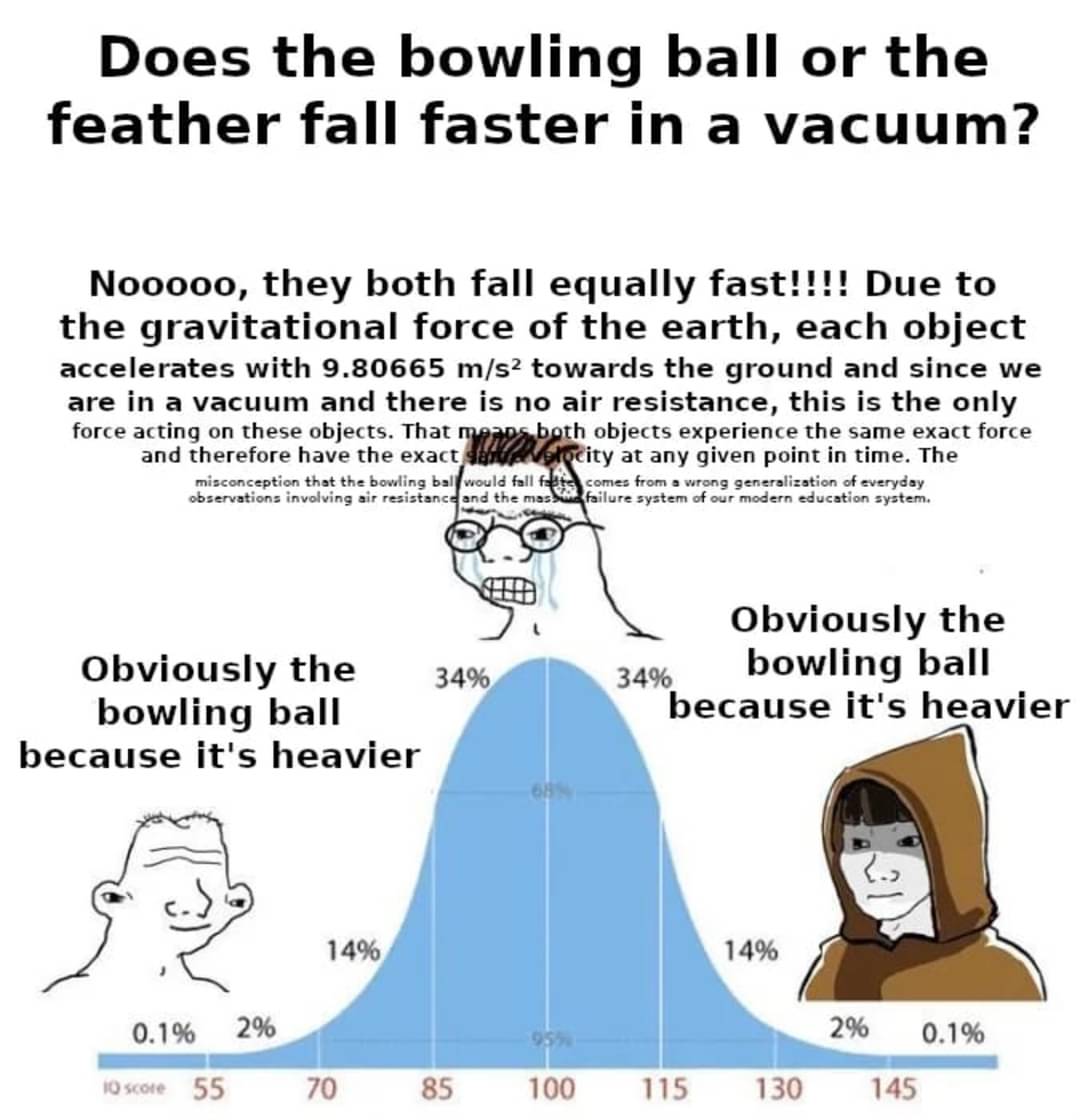this post was submitted on 28 May 2024
227 points (90.1% liked)
Science Memes
11557 readers
1225 users here now
Welcome to c/science_memes @ Mander.xyz!
A place for majestic STEMLORD peacocking, as well as memes about the realities of working in a lab.

Rules
- Don't throw mud. Behave like an intellectual and remember the human.
- Keep it rooted (on topic).
- No spam.
- Infographics welcome, get schooled.
This is a science community. We use the Dawkins definition of meme.
Research Committee
Other Mander Communities
Science and Research
Biology and Life Sciences
- [email protected]
- [email protected]
- [email protected]
- [email protected]
- [email protected]
- [email protected]
- [email protected]
- [email protected]
- [email protected]
- [email protected]
- [email protected]
- [email protected]
- [email protected]
- [email protected]
- [email protected]
- [email protected]
- [email protected]
- [email protected]
- [email protected]
- [email protected]
- [email protected]
- [email protected]
- [email protected]
- [email protected]
- !reptiles and [email protected]
Physical Sciences
- [email protected]
- [email protected]
- [email protected]
- [email protected]
- [email protected]
- [email protected]
- [email protected]
- [email protected]
- [email protected]
Humanities and Social Sciences
Practical and Applied Sciences
- !exercise-and [email protected]
- [email protected]
- !self [email protected]
- [email protected]
- [email protected]
- [email protected]
Memes
Miscellaneous
founded 2 years ago
MODERATORS
you are viewing a single comment's thread
view the rest of the comments
view the rest of the comments

But being more massive means that due to inertia the ball will take just a tiny little wee bit longer to start moving no? So they end up falling at the same time.
Also, are these Newtonian mechanics? How do they compare to relativity at the "bowling ball and feather" scale?
Someone please correct me if I'm wrong. It's been a while since I read anything physics-related.
The above is just referring to the fact that the standard "feather vs. bowling ball" question assumes the earth/moon/ground is immovable. In that case, Newton says they fall the same.
The fact that the ground is not immovable is what's being referenced
in this picture, things don't "fall," they are each accelerated towards each other.
The acceleration from gravity would be the same no matter the object mass (~9.8m/s²).
Oh yes! I omitted that part, but what I meant to say is that mass and inertia balance each other, so that in the end the acceleration from gravity ends up the same for any object.
The bowling ball will still pull the Earth more. For us, everything accelerates at 9.8m/s² (because we all fall to the same Earth), but the Earth accelerates differently per attracting object.